Are you wondering how many cups 220 grams translates to? Look no further as I guide you through a simple conversion process, tailored for your kitchen in the United States.
- Converting grams to cups depends on the specific ingredient being measured.
- 220 grams of flour is approximately 1 3/4 cups, while 220 grams of sugar is about 1 1/8 cups.
- 220 grams of butter equals 1 cup, 220 grams of milk equals 7/8 cup, and 220 grams of cocoa powder equals 2 1/4 cups.
- Grams and cups are not interchangeable units, and measuring by weight using a kitchen scale is more accurate.
- Refer to a cup to gram conversion chart or use a kitchen scale for precise measurements.
Now that you have the essential conversions, you can confidently tackle any recipe that calls for 220 grams. Whether it’s flour, sugar, butter, milk, or cocoa powder, you have the knowledge to achieve accurate measurements for successful cooking and baking. Remember, precision is key, and using a kitchen scale will always provide the most accurate results.
So go ahead and elevate your culinary endeavors with these simple yet invaluable cup to gram conversions. Happy cooking!
Remember to bookmark this guide for future reference and share it with your friends who may find it useful too.
Understanding the Cups to Grams Conversion
Let’s start by understanding how cups and grams relate to each other in order to achieve accurate measurements in your culinary endeavors. When it comes to cooking and baking, recipes often call for ingredients to be measured in cups or grams. Cups are a volume measurement, while grams are a weight measurement. Different ingredients have different densities, which means that the weight of a cup can vary depending on the ingredient being measured. This is why using a cup to gram conversion chart or a kitchen scale is essential for precise measurements.
To convert from cups to grams or vice versa, it’s important to know the specific conversion factor for the ingredient you are working with. For example, a cup of flour may weigh differently than a cup of sugar. This is why relying on a conversion chart is helpful. It provides you with the accurate conversion factor for each ingredient, ensuring that your recipes turn out just right.
Using a kitchen scale is another reliable method for achieving accuracy in your cooking measurements. By weighing your ingredients in grams, you eliminate the variations caused by different ingredient densities. This is especially important for professional chefs or those who want to achieve consistent results in their cooking. By measuring by weight, you can be confident that your recipes will turn out as intended every time.
| Ingredient | Cups to Grams | Grams to Cups |
|---|---|---|
| Flour | 1 cup = 120 grams | 100 grams = 0.83 cups |
| Sugar | 1 cup = 200 grams | 100 grams = 0.5 cups |
| Butter | 1 cup = 227 grams | 100 grams = 0.44 cups |
| Milk | 1 cup = 240 grams | 100 grams = 0.42 cups |
| Cocoa Powder | 1 cup = 125 grams | 100 grams = 0.8 cups |
By referring to a cup to gram conversion chart or using a kitchen scale, you can ensure accurate measurements in your cooking and baking. Whether you prefer the convenience of cups or the precision of grams, understanding the relationship between the two will help you achieve delicious results in the kitchen.
Converting 220 Grams of Flour to Cups
If you’re working with 220 grams of flour, here’s the conversion you need to achieve the perfect consistency in your baked goods. Approximately 1 3/4 cups of flour are equivalent to 220 grams. This conversion applies specifically to all-purpose flour and may vary for other types of flour.
To ensure accurate measurements, it’s recommended to use a kitchen scale when converting between grams and cups. However, if a scale is not available, this conversion chart can serve as a helpful guide. Remember that different ingredients have different densities, so the weight of a cup can vary depending on what you’re measuring.
| Ingredient | 220 Grams to Cups |
|---|---|
| Flour (all-purpose) | Approximately 1 3/4 cups |
| Sugar | Approximately 1 1/8 cups |
| Butter | 1 cup |
| Milk | Approximately 7/8 cup |
| Cocoa Powder (unsweetened) | Approximately 2 1/4 cups |
Measuring ingredients by weight using a kitchen scale is the most accurate method. However, when weight measurements are not available, these cup to gram conversions can help you achieve the desired results in your recipes. Remember to refer to the specific conversion chart for each ingredient to ensure accurate measurements.
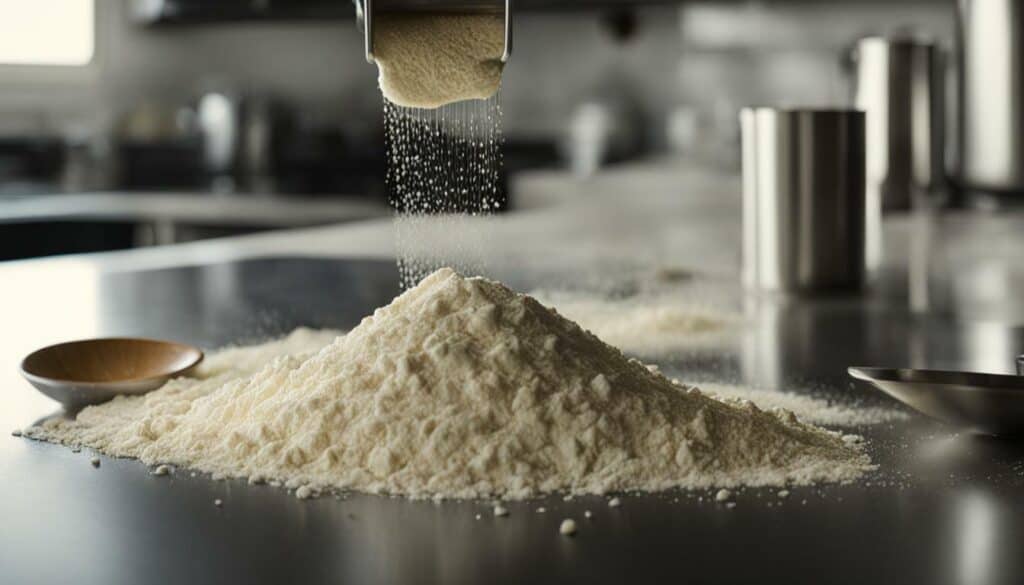
Keep in mind that grams and cups are not interchangeable units, and conversions may slightly vary depending on the ingredient and its density. For more detailed conversion charts and useful measurements for different ingredients, refer to additional resources and tips available to further enhance your cooking journey.
Converting 220 Grams of Sugar to Cups
Sweeten up your recipes by converting 220 grams of sugar into the right number of cups. Sugar is a versatile ingredient used in baking, cooking, and even in beverages. To ensure your measurements are accurate, it’s important to know the conversion from grams to cups for sugar.
For 220 grams of sugar, you’ll need approximately 1 1/8 cups. This conversion applies to granulated sugar, which is the most commonly used type in recipes. However, keep in mind that other types of sugar, such as confectioners’ sugar or brown sugar, may have slightly different conversions, so it’s always best to consult a reliable conversion chart for specific sugar types.
Converting grams to cups for sugar becomes even more crucial when precision is required in delicate recipes, such as pastries or confections. Using the correct amount of sugar helps achieve the desired sweetness and texture, ensuring your creations turn out irresistibly delicious.
So, the next time you come across a recipe that calls for 220 grams of sugar, remember that it translates to approximately 1 1/8 cups in measurement. Enjoy experimenting in the kitchen and creating delightful treats with this handy conversion!
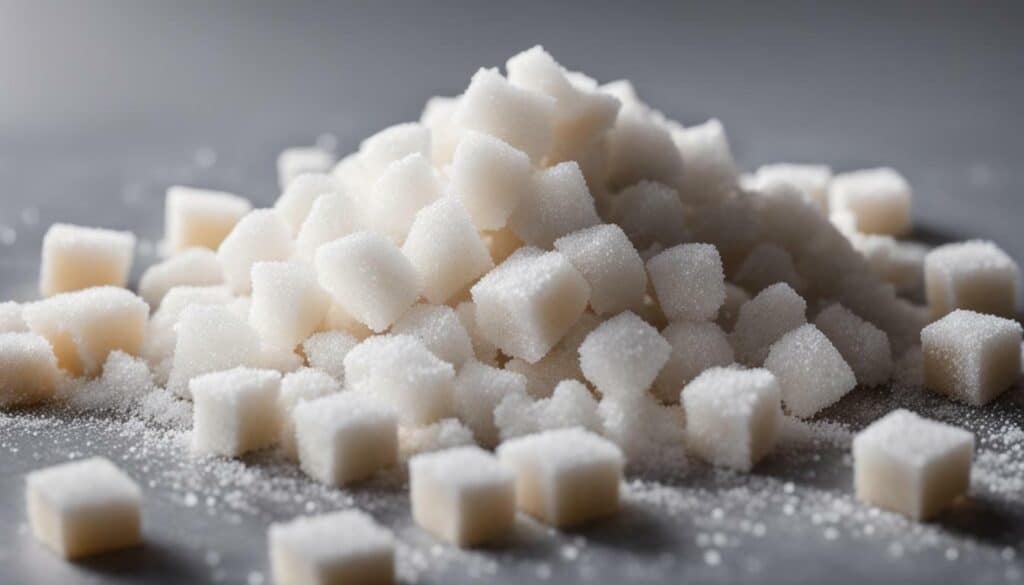
Whether you’re sautéing or baking, knowing how many cups 220 grams of butter corresponds to can make all the difference in your culinary creations. Butter adds richness and flavor to dishes, and getting the measurement right is crucial for achieving the desired results.
To convert 220 grams of butter to cups, you’ll need 1 cup. This conversion is based on the approximate density of butter, which weighs around 227 grams per cup. Keep in mind that the exact measurement may vary slightly depending on the brand and type of butter you’re using.
For precise measurements, it’s always recommended to use a kitchen scale. However, when a scale is not available, knowing the approximate conversion can be incredibly helpful in a pinch.
| Grams (g) | Cups |
|---|---|
| 220 | 1 |
So, whether you’re whipping up a batch of cookies or creating a creamy sauce, rest assured that 220 grams of butter is equivalent to 1 cup. Incorporate this conversion into your kitchen repertoire, and unlock a world of delicious possibilities.
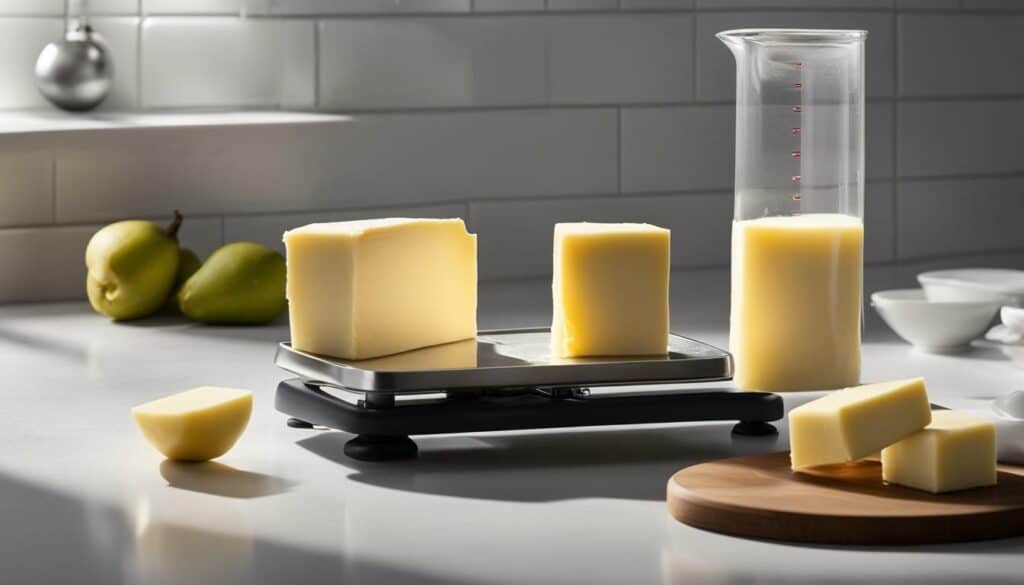
Don’t pour too much or too little milk into your recipe – find out how many cups 220 grams of milk translates to for a perfectly balanced dish. When it comes to liquid ingredients like milk, the conversion from grams to cups is slightly different. For 220 grams of milk, you’ll need approximately 7/8 cup. It’s important to note that this conversion is specific to milk and may not be accurate for other liquids.
Measuring liquid ingredients accurately is crucial for achieving the desired taste and consistency in your dishes. Too much milk can make your recipe too liquidy, while too little milk may result in a dry and less flavorful outcome. By converting 220 grams of milk to cups, you can ensure your recipe turns out just right.
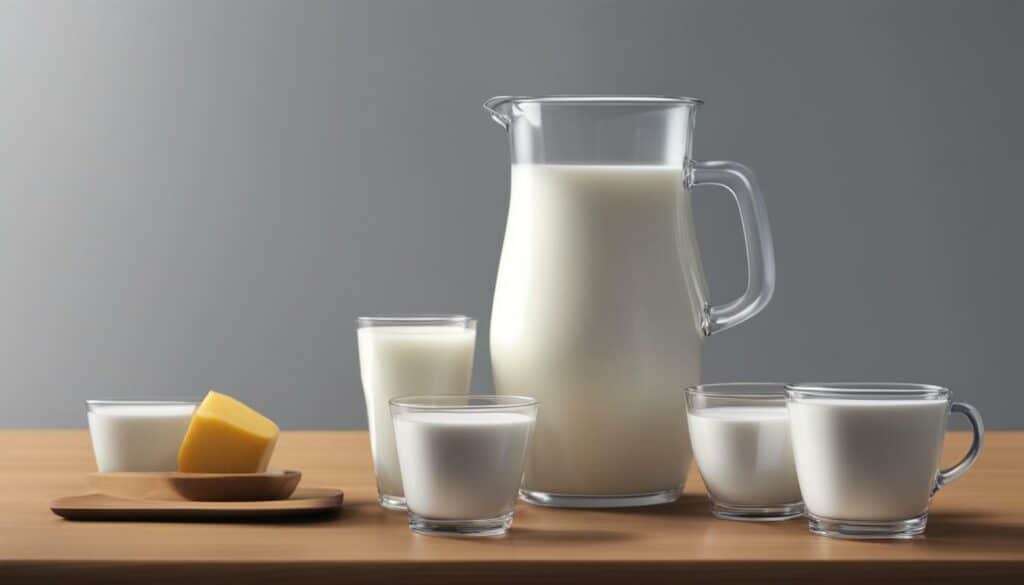
When converting grams to cups for liquids, it’s essential to use a liquid measuring cup. This type of measuring cup is specifically designed to accommodate liquids and provides the most accurate measurement. To convert 220 grams of milk to cups, fill your liquid measuring cup up to the 7/8 cup mark. This will give you the correct amount of milk needed for your recipe.
Remember, while converting grams to cups can be helpful, it’s important to keep in mind that grams and cups are not interchangeable units of measurement. If precision is vital, using a kitchen scale to measure ingredients by weight is the most accurate method. However, when a scale is not available, these cup to gram conversions can serve as useful guidelines for your cooking and baking needs.
Converting 220 Grams of Cocoa Powder to Cups
Interested in infusing your treats with a delightful cocoa taste? Learn the exact conversion for 220 grams of cocoa powder to cups. Cocoa powder adds a rich, chocolatey flavor to various desserts and beverages, making it a staple ingredient in many kitchens. Whether you’re whipping up a batch of brownies or indulging in a hot cup of cocoa, knowing the accurate measurement is crucial for achieving the perfect balance of flavors.
When converting 220 grams of cocoa powder to cups, you’ll need approximately 2 1/4 cups. This conversion is specific to unsweetened cocoa powder, which is commonly used in baking to add depth and complexity to chocolate desserts. Keep in mind that other types of cocoa powder, such as Dutch-processed or sweetened, may have slightly different conversion rates.
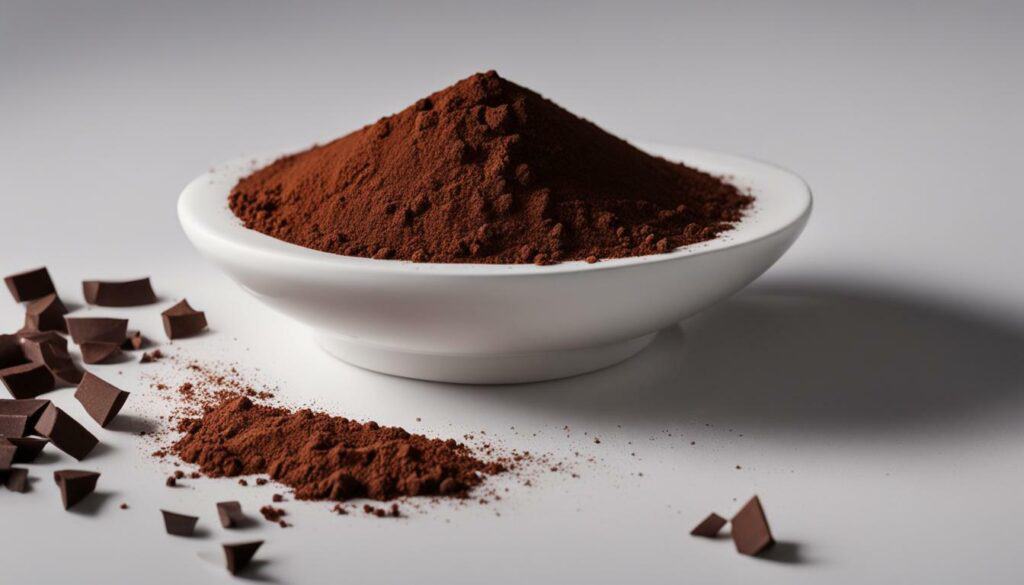
To ensure precise measurements, it’s recommended to use a kitchen scale for accurate weighing. This is especially important when working with ingredients that can vary in density. However, if a scale is not available, this handy conversion can serve as a useful guide.
Now that you know how many cups 220 grams of cocoa powder equates to, you can confidently add this delectable ingredient to your favorite recipes. Whether you’re creating rich chocolate cakes or a cozy cup of hot cocoa, knowing the exact conversion ensures your treats turn out just right.
Achieving Accuracy in Cooking Measurements
While conversions between cups and grams can be useful, it’s essential to understand the importance of accurate measurements in cooking and the advantages of using a kitchen scale. Measuring ingredients by weight provides a level of precision that volume measurements simply can’t match. A kitchen scale allows you to follow recipes more accurately, ensuring consistent results every time.
When it comes to baking, especially, precise measurements are crucial. Flour, for example, can compact and settle during storage, resulting in varying cup measurements. By using a kitchen scale, you can easily measure the exact amount of flour needed, eliminating the guesswork and ensuring your cakes and breads turn out perfectly.
Using a kitchen scale is also beneficial when dealing with different types of sugar. Granulated sugar, brown sugar, and powdered sugar have different densities, which can affect their cup measurements. By weighing your sugar, you ensure the correct sweetness in your desserts and avoid any potential inconsistencies.
| Ingredient | Cups | Grams |
|---|---|---|
| Flour | 1 3/4 cups | 220g |
| Sugar | 1 1/8 cups | 220g |
| Butter | 1 cup | 220g |
| Milk | 7/8 cup | 220g |
| Cocoa Powder | 2 1/4 cups | 220g |
Remember, a kitchen scale is not only useful for converting between cups and grams, but it’s also essential for successful cooking and baking. With the right measurements, you can confidently create delicious dishes that turn out exactly as intended. So next time you’re in the kitchen, consider using a kitchen scale and enjoy the benefits of precise measurements.
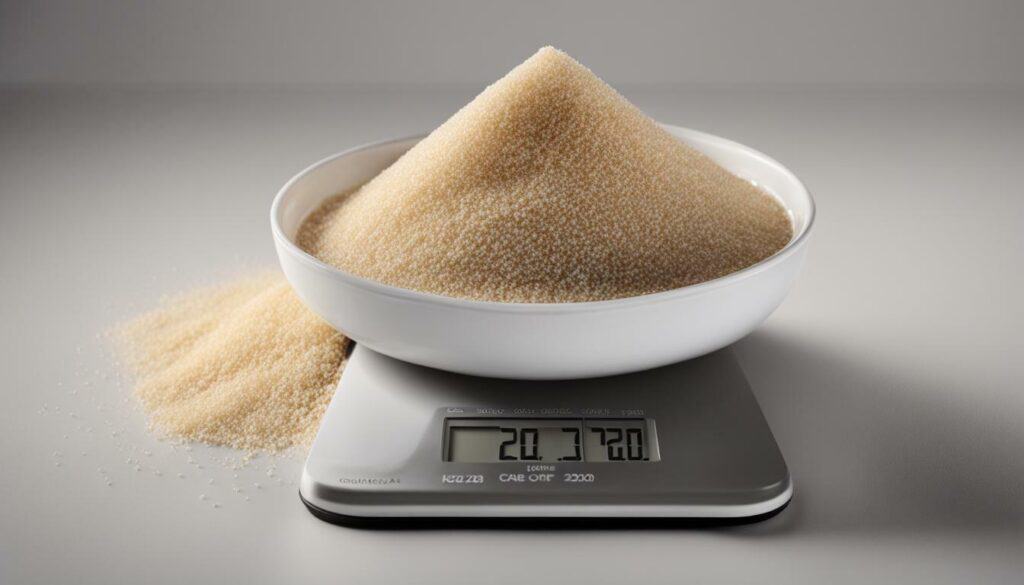
Armed with the knowledge of how many cups 220 grams equates to for various ingredients, you’re now prepared to confidently tackle any recipe that requires precise measurements. Whether you’re baking a cake, making a sauce, or whipping up a batch of cookies, understanding the conversion from grams to cups is essential for achieving the desired results.
Remember, when it comes to measuring ingredients, grams and cups are not interchangeable units. While these conversions provide a helpful guide, using a kitchen scale to measure ingredients by weight will always yield the most accurate results. A kitchen scale allows you to account for the varying densities of different ingredients and ensures that your measurements are precise.
However, if you find yourself in a pinch without access to a kitchen scale, the cup to gram conversions outlined in this guide can still be a valuable resource. Just keep in mind that these conversions are based on averages and may not be exact for every ingredient. Experimentation and adjustments may be needed to achieve your desired taste and texture.
So, whether you’re measuring flour, sugar, butter, milk, or cocoa powder, use this guide as a starting point. With practice and experience, you’ll become more accustomed to the conversions and be able to confidently adapt recipes to suit your preferences. Happy cooking and baking!
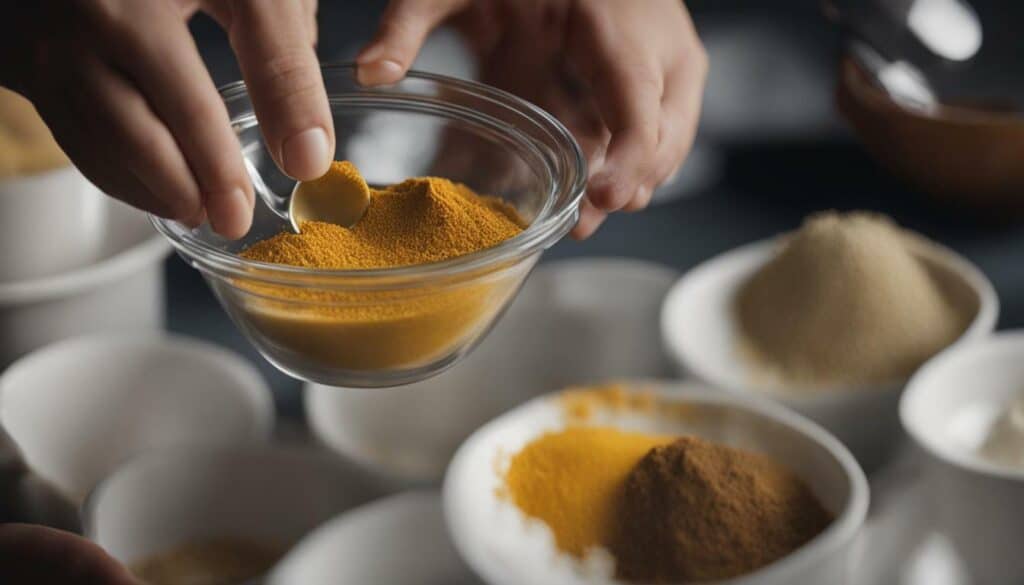
- Refer to a cup to gram conversion chart for more accurate measurements.
- Invest in a quality kitchen scale for precise ingredient measurements by weight.
- Consider the type and density of the ingredient when converting between cups and grams.
- Keep in mind that these conversions are specific to the United States measuring system and may vary in other countries.
- Experiment and adjust the conversions to suit your personal taste and desired results.
Now armed with the knowledge of converting grams to cups, you can confidently tackle any recipe that comes your way. Whether you’re baking a cake or cooking a savory dish, precise measurements are essential for successful culinary creations. With this conversion guide as your ally, you’ll be whipping up delicious meals with ease!
Additional Resources and Tips
Take your culinary skills to the next level with these additional resources and tips to simplify the process of converting grams to cups in your kitchen.
1. Conversion Charts: Keep a handy cup to gram conversion chart in your kitchen for quick reference. These charts provide a comprehensive list of common ingredients and their corresponding measurements in cups and grams. By using these charts, you can easily convert any recipe from grams to cups or vice versa.
2. Measuring Tools: Invest in a reliable kitchen scale and a set of measuring cups and spoons. Measuring ingredients by weight using a kitchen scale ensures accurate and consistent results. However, if you don’t have a scale, measuring cups and spoons can still provide a good approximation.
3. Ingredient Specific Conversions: Remember that different ingredients have different densities, so their conversion from grams to cups may vary. It is crucial to consult ingredient-specific conversion charts or reliable sources to ensure accuracy in your measurements.
4. Practice and Experiment: The process of converting grams to cups may require some trial and error, especially when dealing with unique or unconventional ingredients. Don’t be afraid to experiment and adjust your measurements based on taste and texture preferences.
With these additional resources and tips, you’ll be equipped with the knowledge and tools to confidently convert grams to cups in your kitchen. Happy cooking!
FAQ
Q: How many cups is 220 grams of flour?
A: 220 grams of flour is approximately 1 3/4 cups.
Q: How many cups is 220 grams of sugar?
A: 220 grams of sugar is about 1 1/8 cups.
Q: How many cups is 220 grams of butter?
A: 220 grams of butter equals 1 cup.
Q: How many cups is 220 grams of milk?
A: 220 grams of milk is equivalent to 7/8 cup.
Q: How many cups is 220 grams of cocoa powder?
A: 220 grams of cocoa powder equals approximately 2 1/4 cups.
Q: Why should I use a kitchen scale for accurate measurements?
A: Grams and cups are not interchangeable units, and measuring by weight using a kitchen scale provides more accurate results in cooking.
Q: Can you provide a cup to gram conversion chart?
A: While specific conversions vary for different ingredients, utilizing a cup to gram conversion chart or a kitchen scale will help ensure precise measurements.
Q: How do I convert 220 grams to cups for other ingredients?
A: The conversion depends on the specific ingredient. Refer to a conversion chart or use a kitchen scale for accurate measurements.
Q: Is measuring by weight or by volume more accurate?
A: Measuring by weight using a kitchen scale is generally more accurate than measuring by volume in cooking.
Q: Why is accuracy important in cooking measurements?
A: Accurate measurements are crucial for achieving desired outcomes and consistent results in cooking and baking.
Q: Where can I find additional resources and tips for cups to grams conversions?
A: Check out handy conversion charts and useful measurements for different ingredients to enhance your cooking experience.
How Can I Easily Convert Grams to Cups?
To convert grams to cups, you can use a simple formula based on the ingredient’s density. For example, to convert sugar from grams to cups, divide the weight by its density (200 g per cup). So, 400 grams of sugar is equivalent to 2 cups. Remember to adapt this calculation for specific ingredients, as each may have a different density.

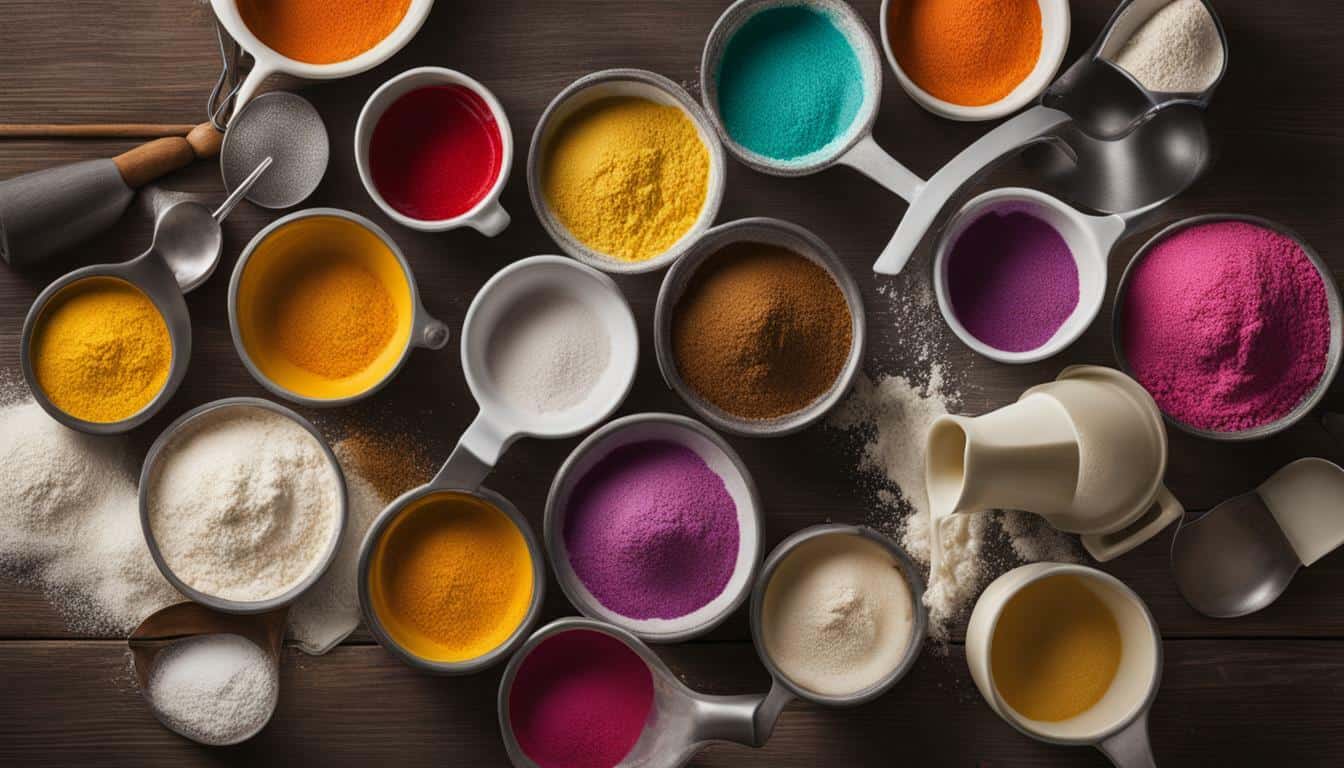



Leave a Reply